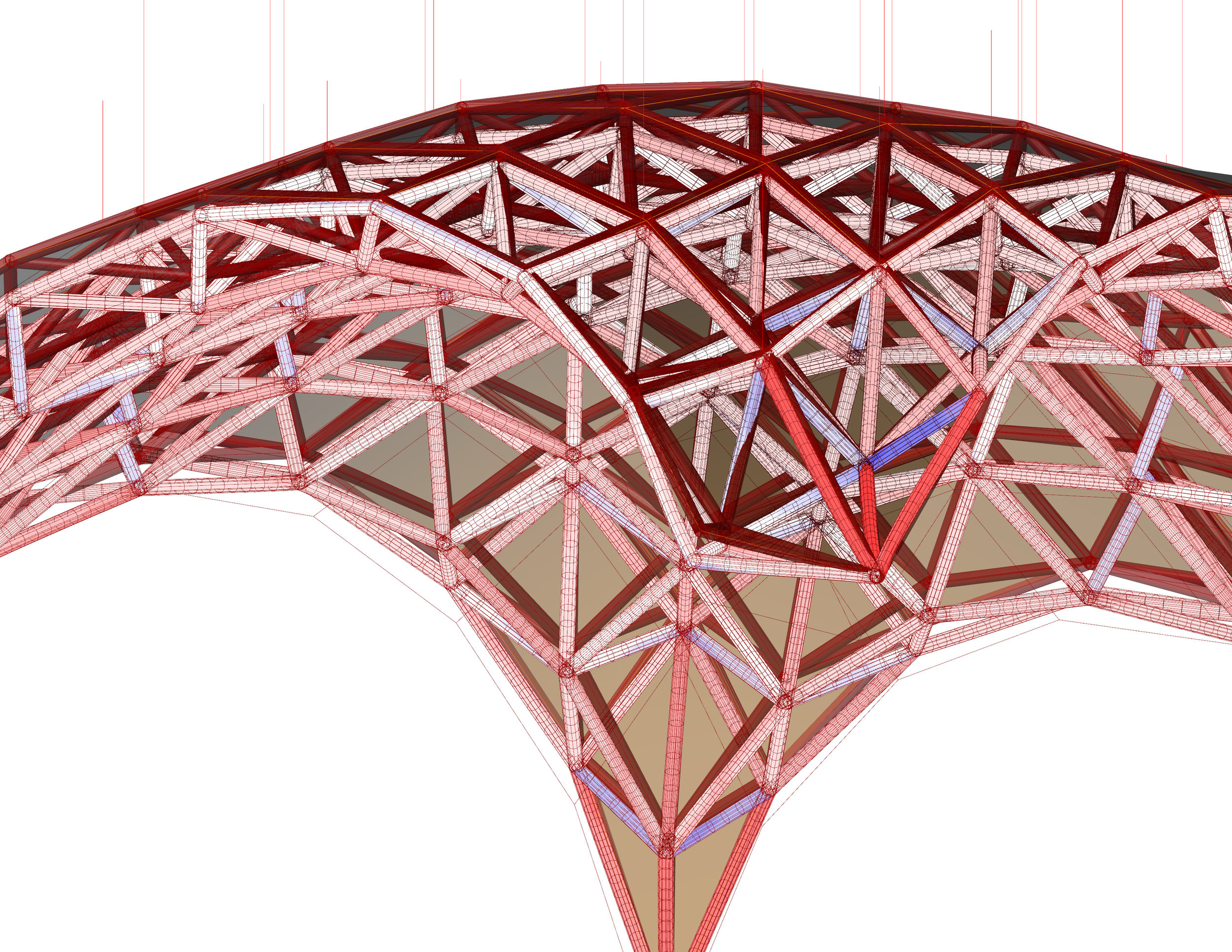VISUALIZING STRUCTURES
SITE // not applicable
PROGRAM // structural analysis + visual study
SEMESTER // spring 2019
ADVISOR // Maged Guerguis




VISUALIZING STRUCTURES is a half semester long research study conducted to understand and visualize how structures act in particular situations. For the study, we utilized Grasshopper for Rhino as well as Karamba, Kangaroo, and other Grasshooper toolsets to experiment with structural visualization and load calculations through sequential iteration. A sound understanding of structure as it relates to design decisions was developed out of this study and was taken further in the project entitled HYDROFORMS.
BEAM + COLUMN ANALYSIS
PART ONE examines Karamba for Grasshopper as a toolset for column and beam frame visualization. Through creating different scenarios with varying beam spacing, materiality, and displacement, we are able to investigate how each member behaves as a result of a theoretical load. For this study, Grasshopper’s Karamba tool is utilized through beam and column framing visualization. We are able to experiment with a variety of different scenarios by adjusting parameters related to loads, load spacing, and more.
Scenario 1 examines the resultant moment and shear diagrams from adjusting the beam spacing and increasing the load.
MAX DISPLACEMENT = .105057 ft
Scenario 2 examines moving the locations of the supports to simulate a cantilever and changing the size of the beams with the same load from scenario 1. A noticably higher max displacement is recorded, indicating the need for I-beam cross sections of larger dimension or less load.
MAX DISPLACEMENT =.381638 ft
Scenario 3 examines the effect of moving cross sections closer to each other. Standard supports are kept and displacement is visualized with I-beams of different dimensions. Not surprisingly, the I-beam with the largest dimensions showed the least max displacement.
MAX DISPLACEMENT (optimal)= .059516 ft









TRUSS ANALYSIS
PART TWO examines using Rhino + Grasshopper to examine vector active truss systems of the parallel chord, howe, crescent, and bowstring typologies. By analyzing each with the same load and dimension, we are able to synthesize information learned in class and visually synthesize the resultants.
Grasshopper’s Karamba tool is utilized through mapping curve linework and determining supports, load applications, and resultant displacement and mass numbers. We are able to experiment with a variety of different scenarios; however, mass and dimensions are kept consistent through each truss system to learn about how each behaves in a particular situation.
APPLIED LOAD: 10 KIPS
APPLIED CROSS SECTION: W12X14
According to the tabulated results, the Crescent typology of truss outperforms all others in terms of mass, max displacement, and axial stress B metrics. Generally, max displacement numbers were comparatively small while axial stresses varied depending on the typology of truss and where the supports were defined. Reaction forces in kips was constant throughout each typology with the applied load of 50 total kips.





SPACE TRUSS



TENSILE STRUCTURES



